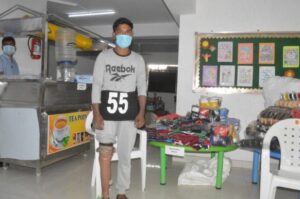
$1,880 of $3,000 raised
Warning: Array to string conversion in /home/u549788733/domains/equallyable.org/public_html/wp-content/themes/alone/give/shortcode-goal.php on line 236
Warning: Array to string conversion in /home/u549788733/domains/equallyable.org/public_html/wp-content/themes/alone/give/shortcode-goal.php on line 236
Disability Employment Platform
Considering the employment and poverty gaps among people with disabilities, EquallyAble had launched the GiveHope1000 initiative, aimed at creating 1000 small business tailored to the skills and tools available to those with disabilities, and was successful in creating financial and social inclusion in a number of families and communities.
Donate Now
